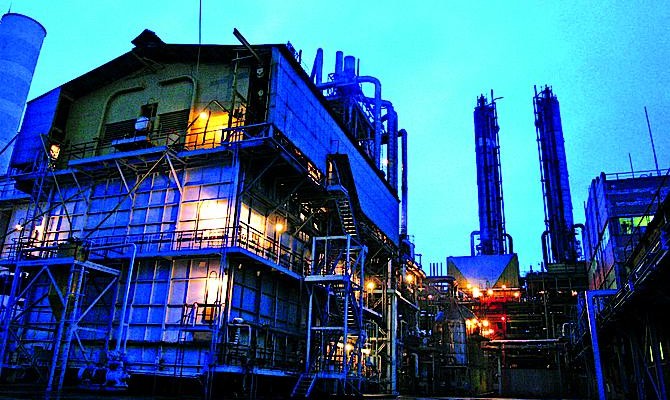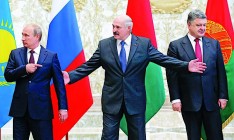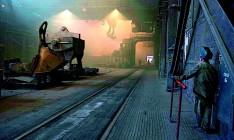Business
ProtectionismUkraine will limit supplies of Russian caustic soda

Just a month ago, the only remaining operating Ukrainian producer of caustic soda DniproAzot (Dniprodzerzhynsk, Dnipropetrovsk oblast), controlled by the Privat Group, filed a complaint with the Ministry of Economic Development and Trade against predatory pricing of Russian producers supplying similar products to Ukraine. Last Friday, the government newspaper Uryadoviy Kuryer published the decision of the Interdepartmental Commission on International Trade (ICIT) to start an anti-dumping investigation.
The ICIT explained its decision saying that the complaint filed by DniproAzot “provided sufficient information in relation to the fact that Russian RD caustic soda is imported to Ukraine at dumping prices”.
This means that the plant was able to provide evidence that Russian manufacturers, which supply caustic soda to Ukraine, sell it at a lower price on their own market. That could be a solid argument for predatory pricing.
Moreover, the commission believes the dumping margin is not the minimum and that the volume of Russian imports is quite significant. Its conclusion is as follows: this import had a negative impact on the Ukrainian manufacturer, which is confirmed by the dynamics of production, capacity load, volumes of sales and other economic indicators of DniproAzot.
Good chances
Industry experts believe that such an assessment of the ICIT will give optimism to DniproAzot, because the commission is confident in damages sustained by the manufacturer. This allows the domestic enterprise to “expect that some sort of an anti-dumping duty will be imposed”, admits the Chief of Infoindustria information company Dmytro Hordiychuk. “The rate of the anti-dumping duty will allow discussion of obstacles to imports,” he added.
Other analysts agree with his point of view and believe that Russian suppliers are actually pursuing a predatory pricing policy on the Ukrainian market. “Russian caustic soda comes to Ukraine at knock-down prices, which definitely deals a blow to DniproAzot,” says Hordiychuk.
The difference in prices between the Russian product and Ukrainian caustic soda in some cases reaches US $20 per ton, which is quite sizable, according to the survey of traders distributing Russian products. Operators and experts cannot give more exact prices. Representatives of the company acknowledge that they cannot compete with Russian suppliers. “Raw materials and energy make up 80% of the production cost of our sodium hydroxide. At the same time, Russian producers have a much higher margin of safety, so they can supply caustic soda to Ukraine at almost any price,” said Deputy Commercial Director of DniproAzot Andriy Semych. In his opinion the unfair competition with Russian suppliers does not allow the enterprise to achieve the required load, although it has the capacity for the annual production of 68,000 t of caustic soda. “In truth, we produce the maximum of 40,000–42,000 t per year in competition with Russia,” explained Semych. Representatives of the plant hope that the investigation will be completed in favor of the domestic producer and that anti-dumping duties will be imposed against Russia, he added. Semych did not specify the desired rate of duties, saying that only the Ministry of Economic Development and Trade has the right to calculate this rate.
The main suppliers of Russian caustic soda to Ukraine in 2014 were the Caustic and Khimprom companies (both located in Volgograd), Khimprom in the Chuvash Republic, Transneftekhim, Procter & Gamble in Novomoskovsk and the Bashkir Soda Company. Among the buyers of the Russian products are mainly the Alumina Plant in Mykolayiv, as well as Dmytro Firtash’ chemical enterprises – the Crimea Titan and Azot plants in Cherkasy and Severodonetsk.
Arguments in favor of the manufacturer
Heated relationship between Ukraine and Russia is, perhaps, the most compelling argument in favor of the domestic producer. Experts believe this should prepossess the ministry, which is obligated to make a decision on the caustic soda issue in favor of the domestic producer. For example, the situation with imports of Russian ammonium nitrate was the same. Nobody expected that the previously existing duties on the fertilizer imported from Russia would be increased so quickly and dramatically by 2–3 times – up to 20–36%. But the agency approved such a hike in price back in July, which in combination with the rising U.S. dollar has virtually put a stop to imports of ammonium nitrate from Russia. At the same time, the share of Russian ammonium nitrate on the Ukrainian market in recent years has not even reached 30% of the level of its consumption.
In this respect, the situation at DniproAzot is even more favorable. In January–September 2014, Russian companies imported to Ukraine 120,300 t of caustic soda valued at approximately US $20 mn. It turns out that within the past 9 months of this year import from Russia has already exceeded the annual rate of production of the Ukrainian enterprise by three times.
Another argument in favor of supporting DniproAzot is the current standstill of the largest manufacturer of caustic soda in Ukraine – Karpatnaftokhіm in Kalush. This company with investment backing of Russia’s LUKOIL was shut down last December. Noteworthy, in 2012 the Kalush oil complex produced 130,100 t of caustic soda, while DniproAzot produced only 45,400 t. Last year, the production of caustic soda in Ukraine was 49,100 t due to the downtime at Karpatnaftokhіm (the plant worked only in September – December – Capital).
Today, the Dniprodzerzhynsk enterprise remains the sole producer of caustic soda in Ukraine. The ministry will take this fact into account, according to analysts. In addition to that, DniproAzot is controlled by Governor of the Dnipropetrovsk Oblast Ihor Kolomoyskiy, who is loyal to the current government. This also increases the plant’s chances for the protection of its products from Russian competitors.






 of the agreement of syndication with Financial Times Limited are strictly prohibited. Use of materials which refers to France-Presse, Reuters, Interfax-Ukraine, Ukrainian News, UNIAN agencies is strictly prohibited. Materials marked
of the agreement of syndication with Financial Times Limited are strictly prohibited. Use of materials which refers to France-Presse, Reuters, Interfax-Ukraine, Ukrainian News, UNIAN agencies is strictly prohibited. Materials marked  are published as advertisements.
are published as advertisements.